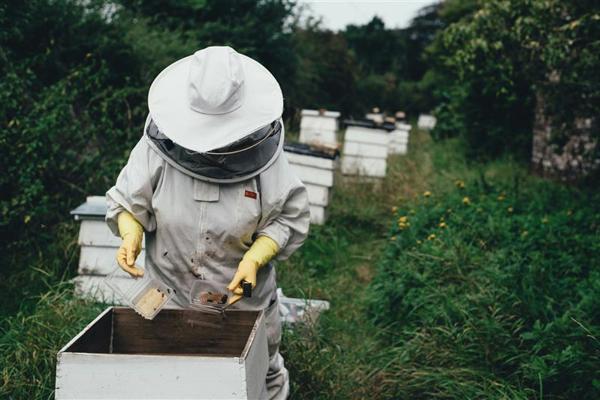In a recent transaction where Morton Fraser represented the landlord and which involved rural land the question was whether the lease constituted an agricultural lease or a commercial lease.
In that particular case the principal use of the land was related to scientific research rather than the normal production of food or items for human consumption. Given all the circumstances, the view we adopted and which was supported by the tenant's solicitors, was that this use fell outwith the definition of "agriculture" set out in the Agricultural Holdings (Scotland) Act 1991 ("the 1991 Act").
The importance was that the parties to the lease (both landlord and tenant) could negotiate and agree a lease on commercial terms unfettered by the underlying (and in certain circumstances supervening) agricultural tenancy legislation. Freedom to contract was important.
Another important case with which Morton Fraser was involved is Fyffe v Esslemont SLC/67/15. This case involved an agricultural tenancy where subletting was prohibited but where a contract farming agreement was put in place. The Scottish Land Court ("SLC") concluded that the tenant had "wholly or substantially abandoned agricultural activity upon the farm", and it was held that this meant that this was no longer an agricultural holding protected by security of tenure under the 1991 Act.
It is often tricky to know whether a lease is an agricultural holding or not. This is very often the case where horses are on the land and some of the court decisions have been contradictory. Consider for example Rutherford v Maurer 1962 1 QB 16. In that case the land was used for grazing horses but the horses were being kept for a riding school - surely not agriculture but truly a commercial business? However, notwithstanding this apparent commercial use, it was held that the use of the land as grazing land was within the definition of agriculture. That decision may seem surprising to many of us engaged in this area of practice because we have all been brought up to understand that, if horses are kept on land, that does not constitute agriculture unless you are going to eat them! Thankfully, in my view at least, this is not common in Scotland or at least we do not usually eat horse meat knowingly. Interestingly the reasoning behind the decision in that case has been called into question, but it was followed by the Sheriff Principal in Crawfurd v Dunn 1981 SLT (Sh Ct) 66. However in a later case - South Lanarkshire Council v Taylor 2005 SC 182, there was a dispute involving a riding school where the land was used for grazing horses. Interestingly in that case it was not suggested that the lease would be subject to the provisions of the 1991 Act.
So already you can see that a) it is not always easy to tell whether a lease falls under the Agricultural Holdings legislation and b) it can be commercially and financially very important to know what type of lease it is!
Why is it so important?
We are currently waiting for certain provisions of the Land Reform (Scotland) Act 2016 to come into force, namely those clauses that will abolish the need for what are called secure 1991 Act tenants to register their interest in order to take advantage of the pre-emptive right to buy. 1991 Act tenants would have that automatic right (subject to limited exceptions) if the land over which they have such a tenancy came up for sale. It is therefore vital that landowners, occupiers of land, and their professional advisers recognise secure agricultural tenancies and the risks of such a tenancy being claimed.
In some cases it may be that a referral to the SLC is required to determine whether a lease is agricultural or not and there have been some interesting cases from the SLC in recent years on this subject.
In one of these, Gunn v Luyken SLC/156/16, the SLC held that an unwritten secure agricultural tenancy had not been created because of a lack of consensus between the parties as to duration and rent (two of the four essential elements of any lease). The case was decided on the question of whether the "tenant'' giving the "landlord" produce grown on the land in question was a ‘rent equivalent’. This argument failed because there was no evidence that parties gave or received the produce following an agreement that produce would constitute rent.
Following the Agricultural Holdings (Scotland) Act 2003, all new tenancies entered into after 27 November 2003 intended to be ‘new’ secure agricultural tenancies must be constituted in writing in advance of commencement, and clearly state that the 1991 Act applies. However there are still regular disputes as to whether tenants who have been farming land for years have a secure 1991 Act tenancy.
Other points
In Scots law a partnership has separate legal persona to that of the individual partners. Accordingly, if the constitution of the partnership changes, the lease may also abruptly terminate unless it states that it is in favour of the partnership howsoever constituted from time to time.
In Oag v Oag’s Executors SLC/172/12 the importance of clearly identifying the nature of the tenants' interest is demonstrated. In the case the applicant was the son of Peter and Jessie Oag who were both deceased. Ownership of the farm was disponed to the son by his parents in 1989, with the son then becoming his brother and sister-in-law’s landlord. He sought to have it declared that the lease was at end on the basis that the lease was to William and Ann Oag as a partnership and that the partnership – and therefore the lease – terminated with a change in the partnership, namely the assumption of one or more of William and Ann’s sons and the subsequent death of William. The SLC held that the lease of the secure agricultural holding was in favour of a partnership and had come to an end on the death of one of the partners. It found that the designation in the lease including the words ‘farming in partnership under the firm name of…..’ demonstrated a lease in favour of the partnership, there being no clear contrary interpretation in the body of the lease. The court acknowledged that the lease was not well drafted, but held that it was sufficiently clear from its terms that the tenancy was in favour of the partnership and not the individuals with the result that in this case there could be no succession to the tenant’s interest.
However again the cases depend very much on the circumstances. Claims can and do arise about the ‘continuance’ of tenancies after the termination of a tenancy in favour of a partnership, terminated by the partnership ceasing to exist. In some cases, the vital deciding factor is a course of action or inaction by one or both parties over a period of years following the change in the partnership constitution.
You can see that this is a tricky topic and one where legal advice is invariably essential!
Contact
For more information on agricultural holdings, or leases in general, please contact me or any member of the Agricultural and Rural Property Team at Morton Fraser.
linsey.barclay-smith@morton-fraser.com. Mobile number 07771 371890


